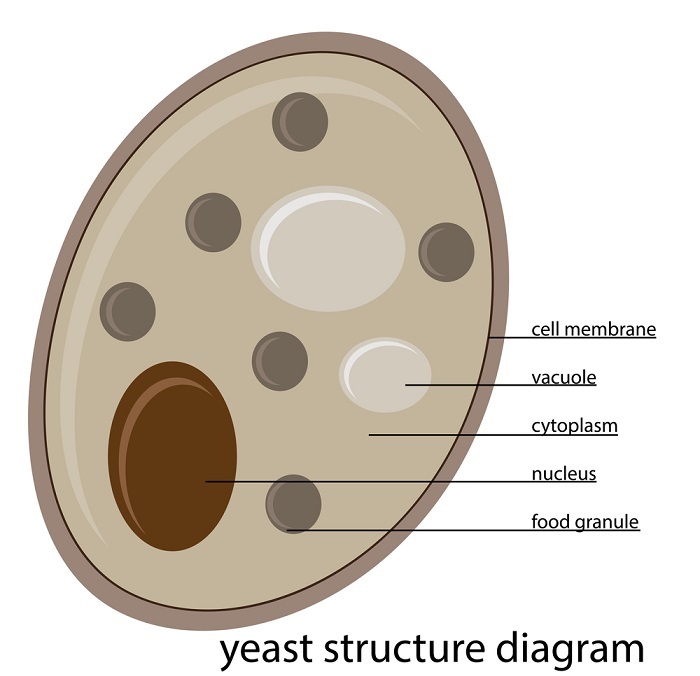
 Data Structure
Data Structure Networking
Networking RDBMS
RDBMS Operating System
Operating System Java
Java MS Excel
MS Excel iOS
iOS HTML
HTML CSS
CSS Android
Android Python
Python C Programming
C Programming C++
C++ C#
C# MongoDB
MongoDB MySQL
MySQL Javascript
Javascript PHP
PHP
- Selected Reading
- UPSC IAS Exams Notes
- Developer's Best Practices
- Questions and Answers
- Effective Resume Writing
- HR Interview Questions
- Computer Glossary
- Who is Who
What Are Industrially Important Organisms?
Introduction
Microorganisms are those organisms whose length is in the order of micrometers, they are so small that, they cannot be seen through the naked eye and require a microscope to observe them. Study of the microorganisms is important as they can cause many diseases, but they are equally important as they are involved in some vital processes in nature also nowadays they are used in industries for the synthesis of certain important products and in bioremediation.
The microorganisms which are used in industries to produce products useful for mankind on a large scale are called industrially important microorganisms.
Characteristic Features of Industrially Important Microorganisms
The microorganisms that are used for the production of the desired product should have certain characteristic properties which are as follows ?
Stable Genetic Makeup
The genetic material of the microorganisms tends to mutate very easily, but microorganisms used for industrial purposes should have a stable genetic makeup and a stable physiology so that no undesirable products are formed.
Rapid Multiplication
Organisms used should be able to multiply rapidly and grow vigorously in the medium used, as the turnover of the product will be greater when the rate of multiplication is greater.
Easy Growth
Microorganisms used should be able to grow in a medium without the requirement of the growth factors. The addition of the growth factors increases the cost of the whole procedure and thereby the product.
Production of Desired Substance
Not only that the microorganism should be able to grow rapidly but also it should also produce the desired product in the end, especially if it is consumable.
Undemanding
The consumption of certain substances like oxygen should be less and the microorganism should not demand more as it can increase the production cost many folds.
Acquiescent to Genetic Manipulations
The organism should be open to any kind of genetic manipulation for the development of new strains with more desired properties.
Physiologically Strong
Organisms used should be strong physiologically to withstand any kind of competition or change in abiotic factors like temperature, pH, etc.
Applications of Industrially Important Microorganisms
Application in Medicine
Certain groups of organisms like fungi and actinomycetes are used to produce antibiotics. Antibiotics are produced by these microorganisms as a natural defense system against other microorganisms living in their vicinity.
Not only antibiotics but vitamin B2, Vitamin B12 and Vitamin C are produced by Neurospora gossypii, Pseudomonas dentirificans and Aspergillus nigar respectively.
Application in the Food Industry
Some microorganisms like Saccharomyces cerevisiae  also known as baker's yeast has been used in the baking industry for long.
also known as baker's yeast has been used in the baking industry for long.
Alcoholic beverages like wine and beer are produced by fermentation of sugar in the fruit juices by yeast and bacteria to produce alcohol and carbon dioxide under anaerobic conditions. Carbon dioxide thus produced is used in the baking industry or to produce carbonated drinks.
Dairy products like yogurt and cheese are also produced by fermentation by Lactococci, Streptococci, and Lactobacilli which use lactose in the milk and convert it into lactic acid.
Some enzymes like human insulin are also produced by recombinant microorganisms like E. coli or yeast by the process of fermentation. Many other enzymes are produced as a result of solid-state fermentation.
Agricultural Application
Microbial pesticides are used to control pests. Bacillus thuringiensis has been used to kill ball worms that eat buds of brinjal. Microbes are used to fix nitrogen and increase the fertility of the soil.
Synthesis of Chemicals
Chemicals like ethanol, acetone, and isopropanol are synthesized by fermentation using clostridia species. Some amino acids are also prepared using microorganisms.
Preservation of Industrially Important Microorganisms
Some industrially important organisms are used for the synthesis of important products, so they should also be preserved for future use which involve the following methods ?
Cryopreservation: Microbial cells are preserved using liquid nitrogen, which freezes the cells without damaging them at a temperature of -2000C.
Lyophilization: This method is also known as freeze drying. In this method involves the freezing of the microbial cells which is followed by drying under vacuum. This method can preserve cells for many years.
Repeated Culturing: In this method the cell culture obtained is sub cultured again and again I fresh medium.
Dried Cultures: This method is used for the storage of fungi and actinomycetes in moist soil then allowed to sporulate, once the sporulation starts it is dried and preserved. Porcelain beads or silica gel can also be used instead of soil.
Preservation Using Mineral Oil: mineral oil specifically paraffin oil is poured on to the agar gel containing the cultures and stored. This method is one of the cheapest and easy method for preservation.
Soil Preservation: In this method sporulating fungi is suspended in sterile water and then autoclaved with soil and then fungi are allowed to grow followed by storage in a refrigerator.
Conclusion
Microorganisms are used for the welfare of the humans for many years, but their storage and preservation has been a big challenge which have been resolved by various techniques. With the use of these techniques microbes can be preserved and used for the development of new products.

